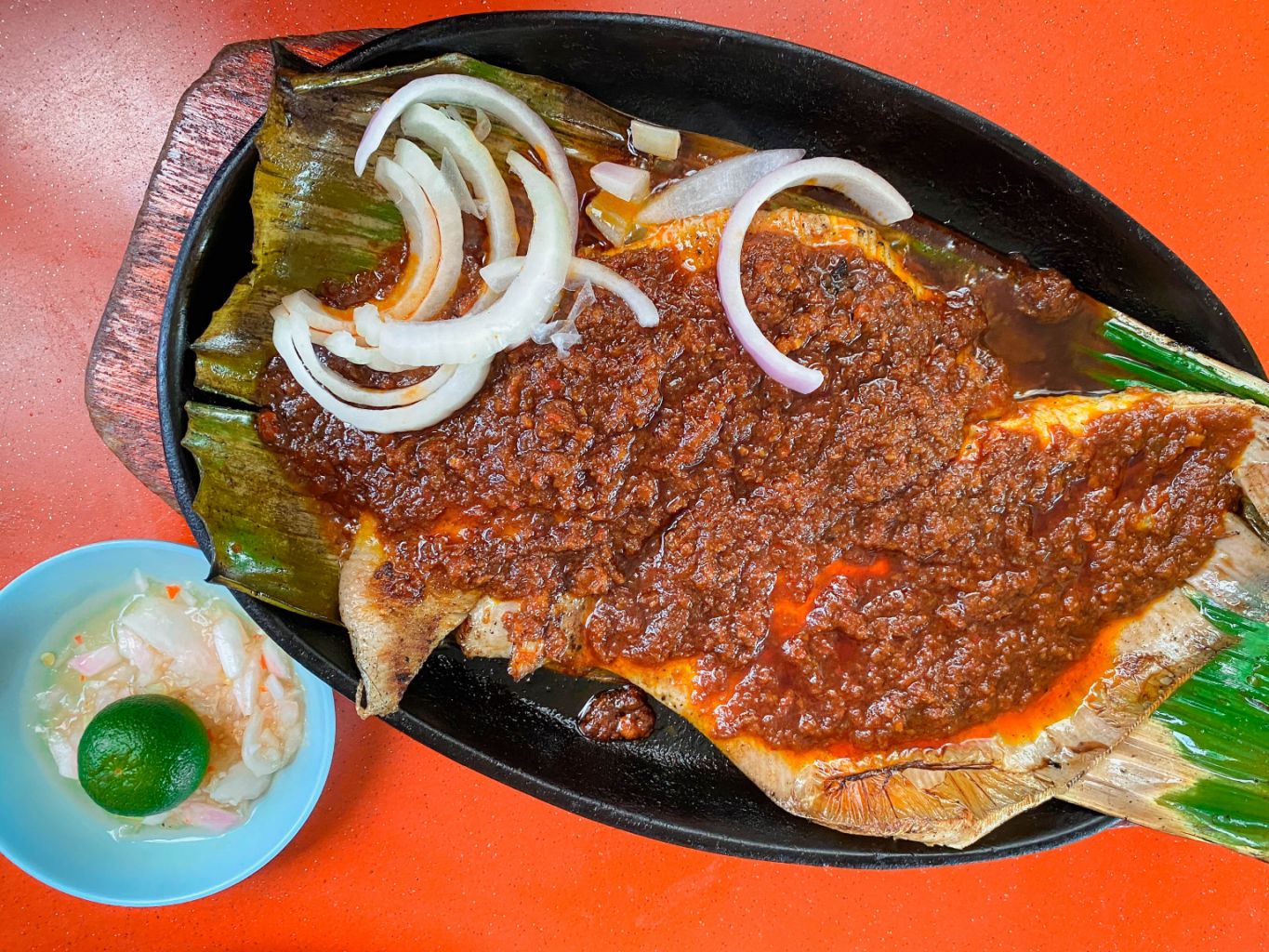S'pore's food history: Stingray's humble past and red snapper's 'banquet fish' days
Sign up now: Get ST's newsletters delivered to your inbox

In the past, stingray meat was not desirable as it had an ammonia-like smell, but cooked in sambal, it is now a favourite.
PHOTO: COURTESY OF KATHY POH
Follow topic:
SINGAPORE - Red snapper and stingray, two species of seafood that anchor culinary favourites in Singapore today, could not have been more different in the 1800s to the early 1900s.
The snapper was an expensive "banquet fish" then, while the stingray's meat was not desirable owing to an ammonia-like smell it emitted hours after being caught, so it was likely consumed mainly by poorer folk as it was cheap.
Today, they are similarly priced, with the red snapper commonly used in fish-head curry and the stingray barbecued and served with sambal.
Developments in the fishing industry have made both items accessible to more people over the years, said researchers at a virtual workshop on Singapore's food history last month, organised by Yale-NUS College.
Dr Geoffrey Pakiam, a fellow at the ISEAS - Yusof Ishak Institute's Temasek History Research Centre, said that since the 1950s, the proliferation of modern boat designs, fishing gear and fish- locating techniques has allowed fishing to be done more deeply and farther out from Singapore, increasing the yield and lowering the price of red snappers.
A 1922 price list in a newspaper listed fresh snapper at 52 cents per kati, about five times the price of stingray meat. However, by the mid-1950s, red snapper prices were comparable to those of the stingray.
Fishing farther offshore meant fishermen had to freeze the catch to preserve it for longer. However, wealthy consumers were used to buying fishes caught from nearer waters that were sometimes still alive when sold.
Retail studies from the 1950s said consumers found frozen fish difficult to accept because their bloodshot eyes and hardened flesh made them appear stale. Frozen red snappers that arrived here in the 1950s and 1960s thus did not immediately catch on despite their lower price, said Dr Pakiam.
Ms Inez Alsagoff, an environmental studies graduate from the National University of Singapore, said in the case of stingrays, the rise in fishing techniques like trawling meant more of them were brought to shore, while chilling technologies on vessels allowed them to arrive in markets fresher than before.
How consumers here eventually overcame their aversion to frozen food remains unclear, although Dr Pakiam noted that cost-conscious restaurants had started serving red snapper in their dishes, including fish-head curry, by the mid-1960s.
A government-led "eat frozen fish" campaign in the late 1970s, coupled with refrigerators becoming common in households, also shaped tastes across the social spectrum, he said.
When and how sambal stingray became mainstream hawker fare here is unknown.
Yale-NUS College research assistant Kathy Poh said recipes from 1950 paired stingray meat with stronger-tasting condiments such as preserved vegetables.
This shows that stingray meat was perhaps never eaten for its flavour, said Ms Poh, who described the meat cooked in sambal sauce as "a canvas meant to showcase the flavours of its condiments".
Noting that red snappers are farmed today, Dr Pakiam said widening consumption of the fish over time "is also the story of a modernising society", reflecting consumers' ambivalence and then growing acceptance of frozen food.
All six sessions of the workshop are available for viewing on Yale-NUS College's YouTube channel.

